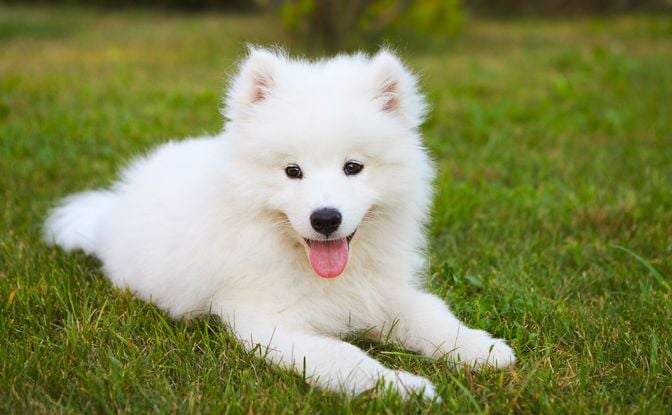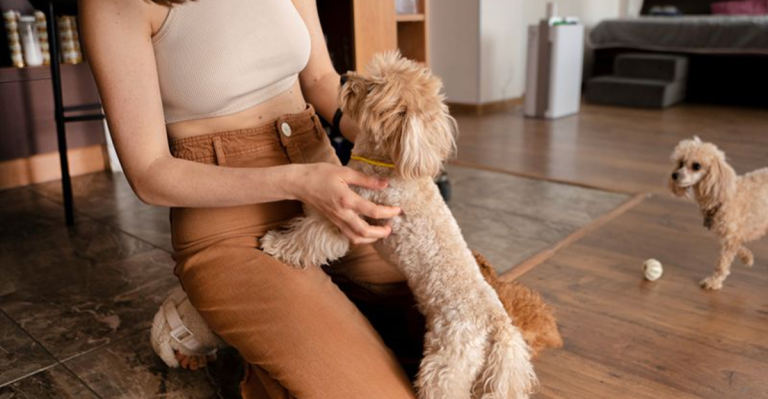7 Signs It’s Too Hot to Walk Your Dog—Just Stay Inside Instead
We all know how excited our dogs get when they hear the jingle of a leash. That tail-wagging enthusiasm can be contagious—and it’s easy to forget that what feels like a “nice warm day” to us might actually be dangerous for them.
Unlike humans, dogs don’t sweat through their skin. They cool off by panting and through their paw pads, making it much harder for them to regulate body temperature when the mercury rises.
Hot weather can quickly turn a routine walk into a health hazard. Overheating, burned paws, dehydration, and even heatstroke can happen faster than many owners realize.
And sadly, dogs are often willing to push through the discomfort just to keep us happy. That’s why it’s our responsibility to know when it’s time to skip the stroll and opt for some indoor fetch or puzzle toys instead.
This article isn’t about scaring you—it’s about giving you practical tools and signs to look out for.
Whether you’re a new pet parent or a seasoned dog owner, understanding the warning flags of excessive heat can make all the difference in your dog’s comfort, safety, and long-term health.
So before you head out for your next midday adventure, pause for a moment and ask: is it really safe right now?
Let’s take a closer look at the 7 signs every owner should know to decide when it’s just too hot to walk your dog.
1. The 5-Second Pavement Test Fails
If you can’t keep the back of your hand on the pavement for five seconds, it’s too hot for your dog’s paws. Simple as that. Asphalt and concrete absorb heat fast and can reach dangerously high temperatures even if the air doesn’t feel scorching.
Dogs’ paw pads are sensitive and can suffer burns without them showing immediate signs of pain. You might not see blisters right away, but damage can occur within seconds. If it hurts you, it’ll hurt them even more.
Try walking on grass or sticking to early morning or evening strolls.
2. You’re Sweating in the Shade
If you’re feeling sticky, flushed, or even slightly woozy in the shade, imagine how your furry friend feels in direct sunlight. Dogs don’t handle heat as well as humans, and they can’t strip off layers or sweat to cool down like we can.
Shade should offer relief. But if it’s still oppressively warm there, that’s your sign to stay in. Don’t rely on the breeze or a short walk to keep things safe.
When in doubt, skip it or play a game indoors instead.
3. Your Dog Is Panting Heavily Before the Walk Starts
Panting is your dog’s cooling system. But if they’re already panting hard before you even step outside, their body is telling you it’s struggling to stay cool. Adding exertion to that mix can quickly push them into dangerous territory.
Watch for open-mouthed, rapid breathing or drooling. These are early signs of overheating.
Don’t ignore them just because your dog seems eager—dogs often power through discomfort to please us.
4. Hot Weather Alerts or Excessive Heat Warnings Are Active
If your local weather service is issuing warnings, take them seriously. Those alerts don’t just apply to humans—dogs are even more vulnerable. Humidity, UV index, and air quality can all impact your pet’s ability to stay safe outside.
Even a “short walk” in these conditions can be too much. Brachycephalic (flat-faced) breeds are especially at risk, but no dog is immune.
Stay informed, and use this as a non-negotiable rule to keep your pup safe.
5. Your Dog Is Lethargic or Uninterested
Dogs are smart. If yours isn’t bouncing toward the door or is slow to get up when you grab the leash, they might be telling you they’re already too warm. Ignoring this can lead to overheating or worse.
Pay attention to their energy levels on hot days. If they seem extra sleepy or hesitant, consider indoor enrichment instead.
Remember, skipping a walk won’t ruin their day—but pushing them in dangerous heat might.
6. The UV Index Is High (Even If It Doesn’t Feel Scorching)
A high UV index means more than just a sunburn risk for you. Dogs can get sunburned too—especially on lighter or thinner fur and exposed areas like noses and bellies. But even beyond burns, high UV levels raise the risk of heatstroke.
You may think it’s safe because the air feels mild or there’s a breeze, but UV exposure adds silent pressure to your dog’s body.
Always check the index before stepping out—it’s often the invisible factor owners forget to consider.
7. Your Dog Keeps Pulling Toward Home or Shade
If your dog keeps steering you back toward home or planting themselves in the shade, they’re trying to escape the heat. This isn’t stubbornness—it’s instinct. Dogs seek cooler ground when they’re too hot, and ignoring these cues can be harmful.
It might feel like they’re being difficult, but in reality, they’re doing exactly what we should be helping them do.
Let them lead the way—sometimes the safest place is right back where you started.













